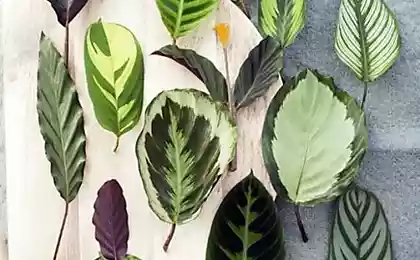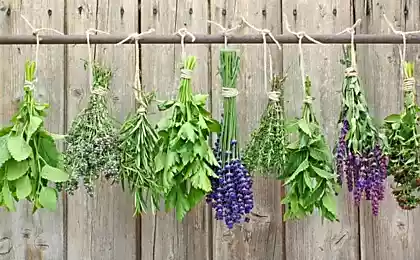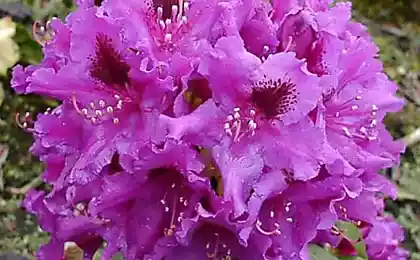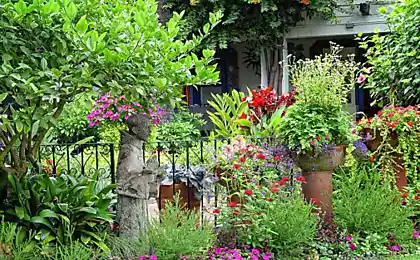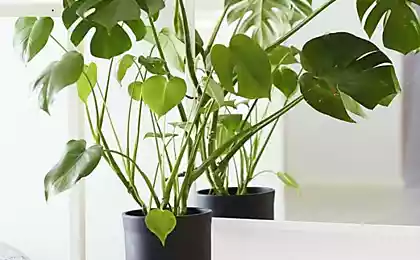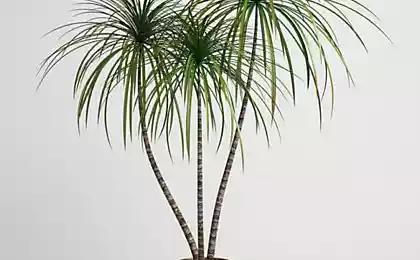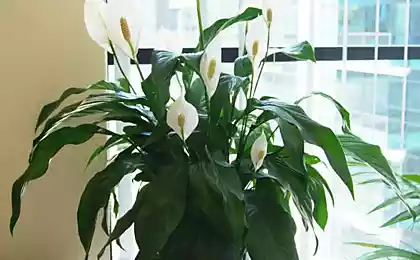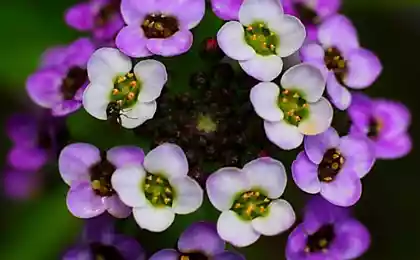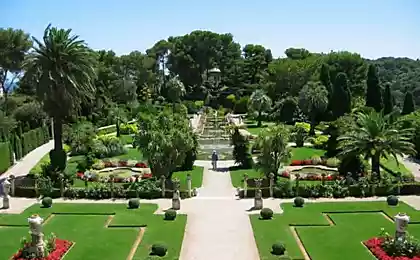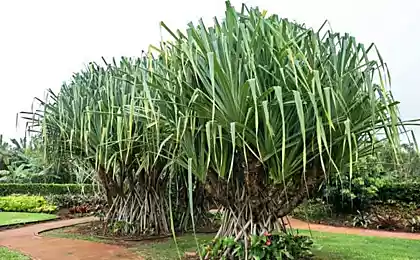523
Loosestrife or Plakun-grass — an ideal plant for any garden
Loosestrife grows in almost all environmental conditions except dense shade, easy to move around to different soils and garden styles. Drawing your gaze, it blooms from June to September. And every flower brings the element of surprise.
Another of its names – the Plakun-grass – loosestrife received for his unusual behavior. At the ends of its leaves after humid summer nights there are "tears". So growing in wet soils the plants get rid of excess moisture.

Strong bahatostebelni shrub of the loosestrife does not require garters, blooms July-more than two months, the years, growing in the same place, without the need for rejuvenating the division and transplanting. It is absolutely winter-hardy and resistant to diseases and pests.
Grebenniki loosestrife and rod plants Russian wet meadows. They occur along the banks of ponds, in open areas, and among coastal shrubs. Modern landscape design respects and not abandon grebenniki: they fit perfectly into the concept of the garden of the small care, natural garden, to the beds of the new wave.
Loosestrife tolerate waterlogged, heavy soil, but grows well on ordinary garden. Add the versatility of colors is shades of pink, crimson and purple, as bright, and not so good. They integrate easily into a variety of compositions. Think about a sufficient number of varieties, allowing you to select the hive from 70 to 150 cm tall. And wonder why you still grebenniki came in every garden.
If we leave aside the Botanical differences between species and to focus only on the decorative qualities Grebennikov loosestrife and rod, the difference between their varieties is the following. Varieties of loosestrife rod more compact, and less water-loving plants that can take the lack of irrigation without losses in quality and length of flowering. They are more suitable for the flower garden and for planting in mixed compositions with conifers or large shrubs.
Choosing varieties for the flower garden, it is enough to consider only the desired dimensions and shade of blossoms, as even in extreme situations, any of Grebennikov will not fail.
Varieties of loosestrife loosestrife.
Among them are a lot alike, so pay attention to the most characteristic. "Feuerkerze" ("Firecandle") — high (120-150 cm) powerful shrub with dense inflorescences of glowing reddish purple hue. In the garden shines from afar, looks good on the banks of a large pond in the neighborhood with meadowsweet, Spartina comb-like, moisture-loving irises. Good and extensive flower beds with large posconnika, veronicastrum, cereals.
"Lady Sackville" as tall, but slimmer and lighter, at the expense of narrower inflorescences, it is bright purple. The flower beds are not so massive, good company with yellow heliopsis, helenium, rudbeckia, pink and white Phlox ("Miss Olga", "Silberlachs", "Casablanca", "Lichtspel"), veronicastrum "Album", pomnikami. The sort of "Blush" (80-90 cm) is color-coded: purple is not at all, the inflorescence pale pink is a warm color. This unexpected success of selection baffled all classic combinations with yellow, cool pink not working, have to find something else.
You can plant with red or white daylilies, astrantia "Buckland", monardo "Beauty of Gobham," yarrows "Apricot" or "Cherry Queen". With pink and cream astilbe (for example, "Kriemhilde") will be combined tone-in-tone, with red and crimson attractive contrast.
"Stichflamme" medium height (100-120 cm) with a light purple long inflorescences. In the flower beds universal for neighborhood fit very many plants: Echinacea, mordovski, Burnet canadian and stupid, grasses, asters and are all yellow team.
One of the most popular varieties, "Robert" is good not only juicy shade of red-purple dense buds, but a low Bush (to 80 cm). If you don't like something "hotter", the color will have to dilute landing near Burnet stupid "Pink Princess", molinee blue, pike soddy, monarda fawn shades, etc.
Exceptionally festive get combined with white Phlox ("Archangel", "Schneerauscti", etc.) or wormwood Louis, anatalia treningovym. Adult "Robert" on nutrient wet soils develops a Bush with a diameter of not less than 80 cm, that is, the neighbors in the flower bed needs to be sturdy enough not to fall under his powerful onslaught.
However, this is true for all Grebennikov — gentle and delicate perennials better to not plant. But they themselves are not scary neighborhood plants aggressors: can be safely planted near meadowsweet red, Pure wormwood, loosestrife point, actively growing varieties of asters novobelichi.
Natural instances of the loosestrife loosestrife, moved to the garden, they look great on the banks of the pond in Sunny flower beds large, powerfully grow (150 cm in height and not less than 100 cm in diameter) and brightly blooming, rejoicing in fertilized garden soils, and amazing color in the autumn leaves in glowing Golden-orange tones.
For the sake of experiment (and the result might be like) in the second half of June to prune the Bush by shortening the shoots by about a third or less. When planting in the open you will get the flowery ball, except that it will not bloom in mid-July, and early August.
Varieties of loosestrife rod.
The giants are no inflorescence rises to a height of 80-100 cm, the Most common shining bright pink "Swirl" (80 cm). "Rosy Gem" (100 cm) and "Rose Queen" (70 cm) similar crimson-pink hue. "Dropmore Scarlet" is a bright Carmine-red, "Dropmore Purple" — purple, both with a height of about 90 cm.
In the flower beds, versatile, good with grasses, and daylilies, monogamy, Veronique, nwankama, echinaceae, helenium, Phlox, astilbe. Nice look on the background of low posconnika: "Phantom", "BabyJoe". Truly compact variety "Helene" rose-purple flowers — bushes grow to only 50 cm tall.
Grebenniki often sold in the form of dormant rhizomes in early spring. Before planting, you can save them in the fridge, but better, if possible, take out the rhizomes in the garden and dig in the snow.
Numerous varieties of loosestrife reproduce only vegetatively: basal cuttings and division of the Bush (spring). Species of plants – sowing seeds in January-March, seedlings or ground before winter. Seedlings bloom on 2-3rd year.
After flowering loosestrife usually not removed from the flower beds, leaving it to stand until spring. The sun tall stalks fade and become transparent bundles. Combined with autumn asters and autumn grasses, the effect is guaranteed. However, in this case, possible self-seeding.published
P. S. And remember, only by changing their consumption — together we change the world! ©
Source: www.sadovoda.ru
Another of its names – the Plakun-grass – loosestrife received for his unusual behavior. At the ends of its leaves after humid summer nights there are "tears". So growing in wet soils the plants get rid of excess moisture.

Strong bahatostebelni shrub of the loosestrife does not require garters, blooms July-more than two months, the years, growing in the same place, without the need for rejuvenating the division and transplanting. It is absolutely winter-hardy and resistant to diseases and pests.
Grebenniki loosestrife and rod plants Russian wet meadows. They occur along the banks of ponds, in open areas, and among coastal shrubs. Modern landscape design respects and not abandon grebenniki: they fit perfectly into the concept of the garden of the small care, natural garden, to the beds of the new wave.
Loosestrife tolerate waterlogged, heavy soil, but grows well on ordinary garden. Add the versatility of colors is shades of pink, crimson and purple, as bright, and not so good. They integrate easily into a variety of compositions. Think about a sufficient number of varieties, allowing you to select the hive from 70 to 150 cm tall. And wonder why you still grebenniki came in every garden.
If we leave aside the Botanical differences between species and to focus only on the decorative qualities Grebennikov loosestrife and rod, the difference between their varieties is the following. Varieties of loosestrife rod more compact, and less water-loving plants that can take the lack of irrigation without losses in quality and length of flowering. They are more suitable for the flower garden and for planting in mixed compositions with conifers or large shrubs.
Choosing varieties for the flower garden, it is enough to consider only the desired dimensions and shade of blossoms, as even in extreme situations, any of Grebennikov will not fail.
Varieties of loosestrife loosestrife.
Among them are a lot alike, so pay attention to the most characteristic. "Feuerkerze" ("Firecandle") — high (120-150 cm) powerful shrub with dense inflorescences of glowing reddish purple hue. In the garden shines from afar, looks good on the banks of a large pond in the neighborhood with meadowsweet, Spartina comb-like, moisture-loving irises. Good and extensive flower beds with large posconnika, veronicastrum, cereals.
"Lady Sackville" as tall, but slimmer and lighter, at the expense of narrower inflorescences, it is bright purple. The flower beds are not so massive, good company with yellow heliopsis, helenium, rudbeckia, pink and white Phlox ("Miss Olga", "Silberlachs", "Casablanca", "Lichtspel"), veronicastrum "Album", pomnikami. The sort of "Blush" (80-90 cm) is color-coded: purple is not at all, the inflorescence pale pink is a warm color. This unexpected success of selection baffled all classic combinations with yellow, cool pink not working, have to find something else.
You can plant with red or white daylilies, astrantia "Buckland", monardo "Beauty of Gobham," yarrows "Apricot" or "Cherry Queen". With pink and cream astilbe (for example, "Kriemhilde") will be combined tone-in-tone, with red and crimson attractive contrast.
"Stichflamme" medium height (100-120 cm) with a light purple long inflorescences. In the flower beds universal for neighborhood fit very many plants: Echinacea, mordovski, Burnet canadian and stupid, grasses, asters and are all yellow team.
One of the most popular varieties, "Robert" is good not only juicy shade of red-purple dense buds, but a low Bush (to 80 cm). If you don't like something "hotter", the color will have to dilute landing near Burnet stupid "Pink Princess", molinee blue, pike soddy, monarda fawn shades, etc.
Exceptionally festive get combined with white Phlox ("Archangel", "Schneerauscti", etc.) or wormwood Louis, anatalia treningovym. Adult "Robert" on nutrient wet soils develops a Bush with a diameter of not less than 80 cm, that is, the neighbors in the flower bed needs to be sturdy enough not to fall under his powerful onslaught.
However, this is true for all Grebennikov — gentle and delicate perennials better to not plant. But they themselves are not scary neighborhood plants aggressors: can be safely planted near meadowsweet red, Pure wormwood, loosestrife point, actively growing varieties of asters novobelichi.
Natural instances of the loosestrife loosestrife, moved to the garden, they look great on the banks of the pond in Sunny flower beds large, powerfully grow (150 cm in height and not less than 100 cm in diameter) and brightly blooming, rejoicing in fertilized garden soils, and amazing color in the autumn leaves in glowing Golden-orange tones.
For the sake of experiment (and the result might be like) in the second half of June to prune the Bush by shortening the shoots by about a third or less. When planting in the open you will get the flowery ball, except that it will not bloom in mid-July, and early August.
Varieties of loosestrife rod.
The giants are no inflorescence rises to a height of 80-100 cm, the Most common shining bright pink "Swirl" (80 cm). "Rosy Gem" (100 cm) and "Rose Queen" (70 cm) similar crimson-pink hue. "Dropmore Scarlet" is a bright Carmine-red, "Dropmore Purple" — purple, both with a height of about 90 cm.
In the flower beds, versatile, good with grasses, and daylilies, monogamy, Veronique, nwankama, echinaceae, helenium, Phlox, astilbe. Nice look on the background of low posconnika: "Phantom", "BabyJoe". Truly compact variety "Helene" rose-purple flowers — bushes grow to only 50 cm tall.
Grebenniki often sold in the form of dormant rhizomes in early spring. Before planting, you can save them in the fridge, but better, if possible, take out the rhizomes in the garden and dig in the snow.
Numerous varieties of loosestrife reproduce only vegetatively: basal cuttings and division of the Bush (spring). Species of plants – sowing seeds in January-March, seedlings or ground before winter. Seedlings bloom on 2-3rd year.
After flowering loosestrife usually not removed from the flower beds, leaving it to stand until spring. The sun tall stalks fade and become transparent bundles. Combined with autumn asters and autumn grasses, the effect is guaranteed. However, in this case, possible self-seeding.published
P. S. And remember, only by changing their consumption — together we change the world! ©
Source: www.sadovoda.ru




